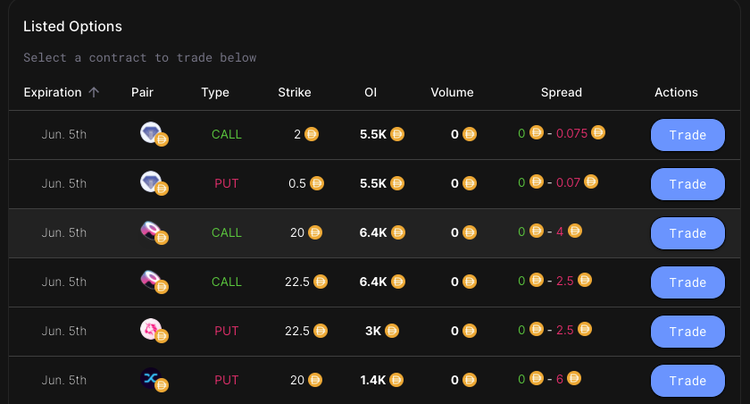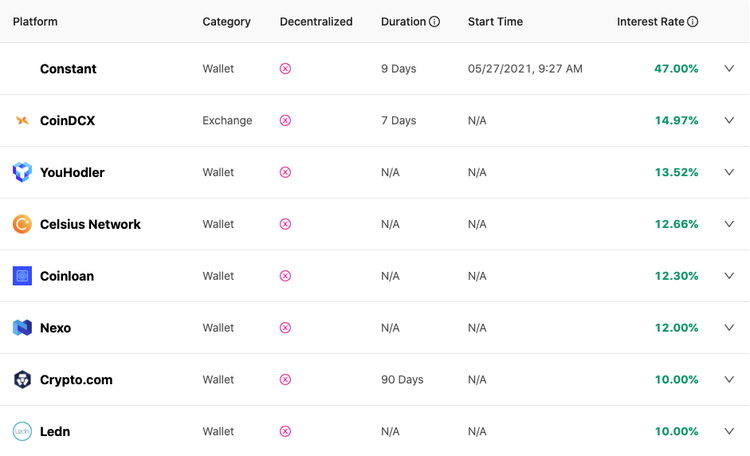The cryptocurrency market is generally considered to be one of the most attractive avenues for investors, thanks to the sheer volatility of most cryptocurrencies and the number of opportunities that brings.
However, the vast majority of cryptocurrency investors only speculate in one direction — up. That is, they look to capture profits when the market grows in value, and often don’t have a plan in place for when the market dips.
The capacity to turn a profit during both an up and down market is what separates a truly successful investor from a mediocre one. Here, we take a look at some of the ways experienced investors stay on top of the market, no matter what direction it moves.
Create Custom Options
One of the ways cryptocurrency users look to maximize their investment opportunities is through options trading. As derivatives contracts that give users the right to buy or sell an underlying asset on a specific date at a pre-agreed price, options contracts allow users to easily speculate on the direction of an asset’s price movement.
Options have become particularly attractive investment vehicles for those looking to speculate on the downside, since they can easily buy put options that have a strike price that is higher than what they expect the asset will be valued at when they redeem the option. They will then be able to execute the option at the strike price within the redemption window (i.e. higher than the market price), whereas if the asset is lower than the strike price, they will simply lose their premium.
However, while the vast majority of traders still trade on centralized options exchanges, including the likes of Deribit and FTX, many of the more savvy traders have begun transitioning to decentralized options trading platforms — like Premia.
Part of the reason behind this is clear, Premia allows traders to create their own call and put options for whichever cryptocurrency they choose — effectively allowing them to speculate on the price movement of a range of ERC-20 DeFi assets without limitations on strike price, expiry date, number of contracts, etc.
Moreover, the platform also includes a decentralized marketplace where these, and a range of other available options can be traded, helping users speculate on a wider array of assets and source liquidity for their own options while avoiding the downsides that come with centralized exchanges.
Switch to a Savings Account
Just like regular banks, which typically offer (albeit measly) interest on your deposits, it’s also possible to earn interest on your cryptocurrency deposits. However, unlike a regular bank, these deposits will generally earn you between 5-10% APY, depending on the savings provider you use.
The way these platforms generate interest for users can vary, but in general, they usually use user deposits for overcollateralized loans. This essentially means anybody who borrows from the platform needs to put down more than 100% of the value of the loan as collateral. In some cases, this collateral can be up to 1,000%, and the borrower is required to maintain this collateral above a certain ratio (e.g. 500%) or face automatic liquidation to protect the lenders.
These firms charge borrowers a certain amount of interest, keep a small chunk, then pass the rest on to depositors as interest. Generally, crypto savings providers will pay higher interest on stable assets, like Tether (UST) and USD Coin (USDC) compared to volatile ones like Bitcoin (BTC) and Ethereum (ETH).
There are now dozens of platforms that offer cryptocurrency savings plans. Some of the most popular include Nexo, BlockFi and Celsius Network. These can vary considerably in the interest they pay, their security, and their perks — but can represent an attractive way to earn a stable yield even when the market is struggling.
Provide Liquidity For Stablecoin Pairs
Decentralized finance has brought with it a huge range of tools and platforms which empower both regular cryptocurrency users and dedicated investors.
Not the least of these are automated market makers (AMMs) — a type of decentralized exchange that uses liquidity pools rather than order books to facilitate liquidity. But while these have revolutionized the way users trade, they have also provided a relatively safe way to obtain a return from idle assets by providing liquidity.
In practice, this entails contributing assets to both sides of a liquidity pool in equal measure. For example, an investor might contribute 1 ETH and 2,800 USDT to an ETH/USDT pool. In return for their liquidity support, they will receive a proportional share of any transaction fees generated when users extract liquidity from the pool by trading.
But while volatile assets pools can lead to an undesirable phenomenon known as impermanent losses (ILs), there are also relatively non-volatile pools, which are formed of two different stablecoins, such as DAI/USDT, USDC/USDT, BUSD/USDT, etc. Because these are inherently stable, they do not usually attract ILs, but still allow liquidity providers to earn a yield from the trading fees.
The exact returns achievable vary considerably by pool and AMM, but tend to range between 5-15% APY.




